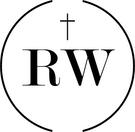Icon
A religious icon is an image or representation, often of a holy person, scene, or symbol, used to aid in worship or devotion. While Roman Catholic and especially Eastern Orthodox traditions venerate icons as important tools for spiritual focus and instruction, most Protestant denominations view the use of such images as a potential form of idolatry.
In the earliest centuries of Christianity, many Church Fathers expressed strong reservations about the use of images in worship. Their concerns were shaped both by their Jewish heritage, which strictly forbade graven images, and their desire to distance Christianity from the idolatrous practices of Greco-Roman paganism.
Tertullian, a prolific early Christian author from Carthage, was one of the earliest and most outspoken critics of Christian use of images. He warned against the dangers of idolatry in numerous writings, particularly in his treatise On Idolatry. Tertullian condemned not only the worship of images but even their creation and use in any religious context. He wrote:
"Idolatry is the chief crime of humanity, the highest guilt charged upon the world; after it, all other sins follow."
Tertullian also criticized Christian artists who created religious images, arguing that their work contributed to idolatrous practices. Likewise, Irenaeus of Lyon critisised the heretical Carpocratian gnostic sect for their use of portraits of Christ. In Against Heresies (Book 1, Chapter 25), he recounts:
“They (the Carpocratians) possess images, some of them painted, and others formed from different kinds of material; while they maintain that a likeness of Christ was made by Pilate at that time when Jesus lived among them.”
In the 3rd and 4th centuries, Christian art was beginning to appear in catacombs, depicting biblical scenes and figures such as Christ and Mary. These images were not worshipped themselves but were used to direct the viewer’s mind toward divine realities. With the legalisation of Christianity under Emperor Constantine in the 4th century, religious art flourished, and icons became more common in churches and homes.
Those who argued for icons claimed that Christ’s incarnation justified the depiction of divine figures. One of the strongest theological defences came from John of Damascus, who wrote extensively in support of icons. He argued that since God took on visible human form in Jesus, it was not only permissible but beneficial to depict him and other holy figures in art.
Opposition to icons resurfaced with the Protestant Reformation.
